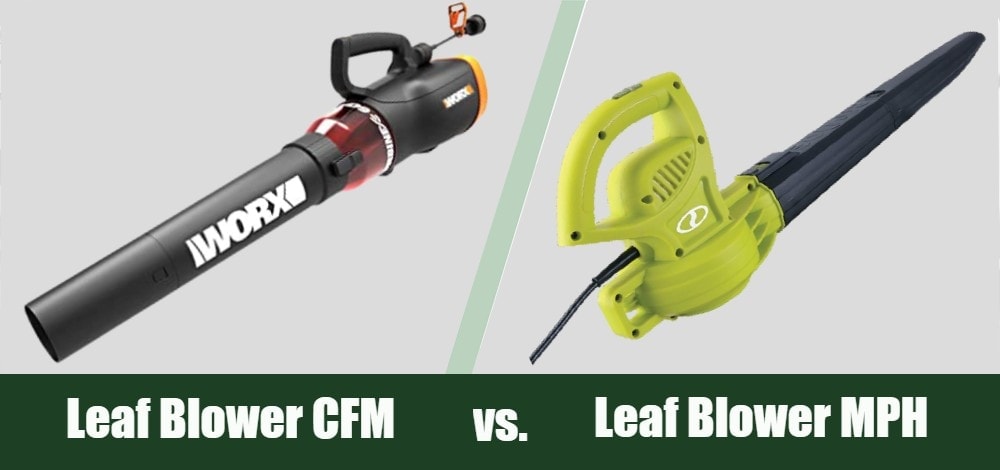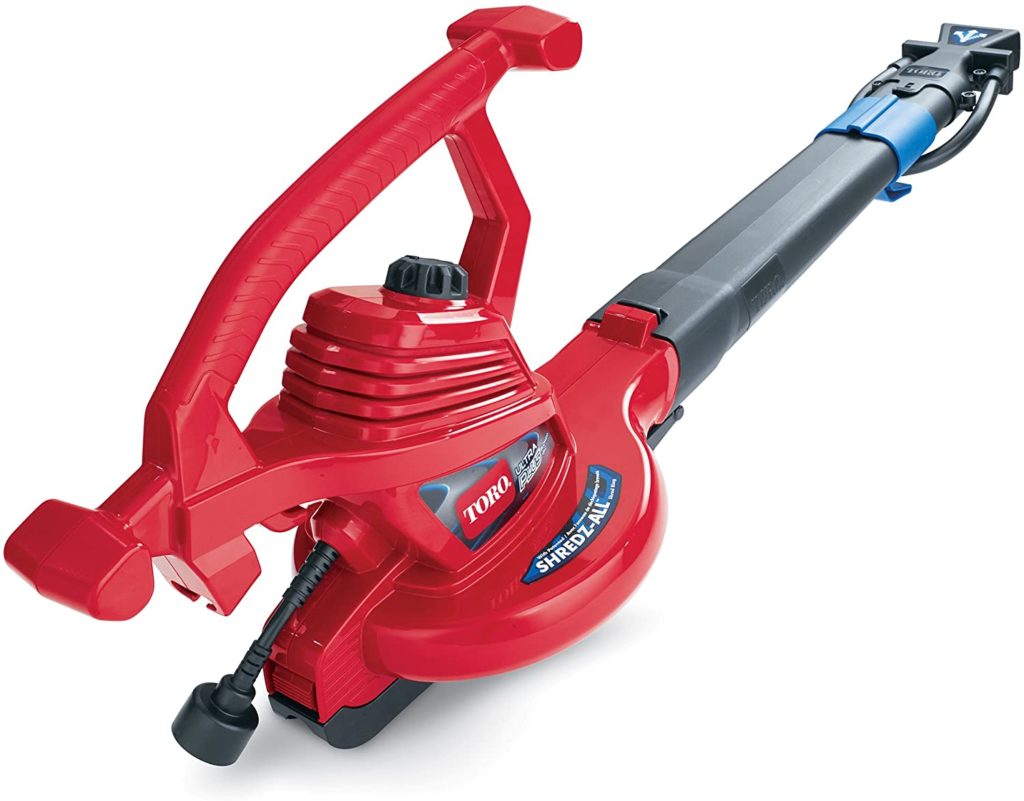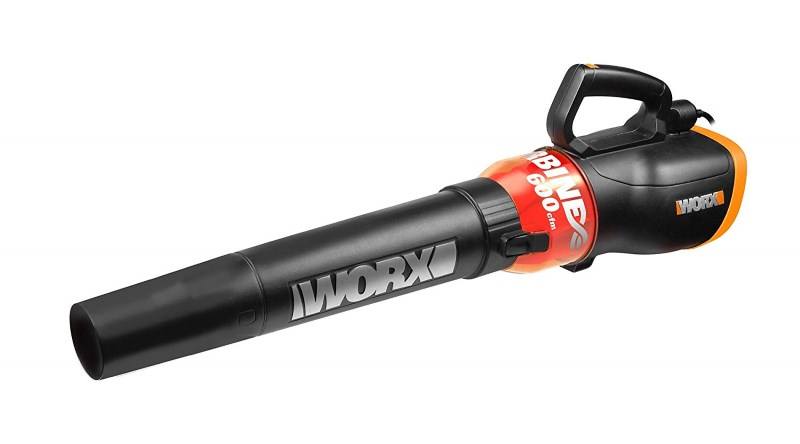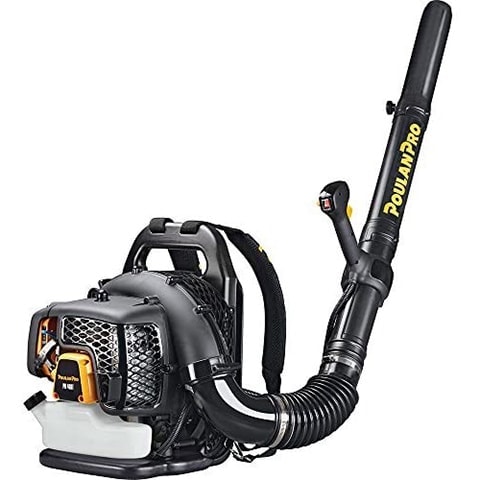Leaf Blower CFM vs MPH: Which Metric is Most Important?
-
Pete Ortiz
- Last updated:

We love our leaf blowers. There is something very satisfying about using air to push things around into tidy piles. But when it comes to the power game, two complicated metrics used to have us scratching our heads: CFM and MPH. What’s the difference?
It seems deceptively simple to assume that speed is everything in leaf blowing. CFM and MPH are complementary measurements that work together to create output. Keep reading as we break down the difference between CFM and MPH, and how these two properties of physics help keep our lawns free of autumn leaves.
CFM vs MPH: What’s the Difference?
While there are a variety of leaf blower options, when it comes to blowing force, the air output is measured by CFM (cubic feet per minute) and MPH (miles per hour). It might not seem like it, because air is air, and if it blows the leaves, does it really matter? We are here to tell you it absolutely does.
CFM is more about how much air is pushed through the unit and out the nozzle. Where MPH is the speed at which it is pushed. One is like getting hit by an air compressor hose and the other is like sticking you head out a car window. The difference is can change the dynamic of how well your leaf blower does what you want it to do.
So, how do you choose the right blower based on this information? Well, what do you need it for? Are you a landscaper or do you work for the city, clearing large swaths of public use land for cosmetic appeal? Or do you just want to get those infernal leaves out of your yard in the quickest way possible?

What is a Good CFM for a Leaf Blower?
The best CFM is midrange between 350 to 600 CFM, blowing north of 190 MPH. Too low will not do the job, too high and you lose control of the leaves, making the job take longer.
3 Types of Leaf Blowers
Leaf blowers come in three distinct styles:
1. Electric
Powered by an exceptionally long extension cord, electric leaf blowers produce great power, but the cord can be cumbersome. Most models can put out between 350 and 450 CFM, which is about 190 MPH or more. They are, however, the lightest weight, lowest maintenance, and most inexpensive, as well as never needing charged or re-fueled.
2. Battery-powered
A more versatile option for domestic applications because they run on rechargeable 18-volt batteries, the CFM can be very high, with the MPH being marginal. A 500 CFM model might put out no more than 160 MPH of air force. The battery will last about on hour at best, depending on the size. Once again, great for home, but not good for professional landscaping, unless you have lots of batteries and patience.
3. Gas-powered
For commercial efficiency, this is the way to go. They are by far the most expensive of the options. They are heavier because of the gas engine and fuel storage, but they most often have a backpack mount to help with the weight. They are very versatile and have a long run time on a single fueling. The biggest difference, that gas-powered units have engines, not motors, the larger the engine, the greater the CFM. For example, the Echo 58.2cc model, churning out 517 CFMs, will blow at 217 MPH.
The common thread is that all of these use the same formula to produce close to the same result, just in three distinct packages. So, when choosing your weapon to go into battle with your yard full of leaves, any of them will work as long as you know how much air is going to be pushed through and out of your blower.
CFM vs MPH: A Simple Physics Analogy
Another way to approach the question of CFM vs. MPH is in a simple physics analogy. Shoot a ¾-inch paintball at a wall on a windless day – the paintball travels about 200 miles per hour. The ball will fly, splatter, but only affect a small area. Now take a watermelon and throw it by hand at the same wall. It will fly slowly, explode, but cover a larger area.
Now instead, measure out how many paintballs it takes to weight the same amount as the watermelon, and fire away. You will cover the same area as the original watermelon in a much more efficient way, because of how fast they come out of the gun.
Because cubic feet per minute is a measurement of volume, and miles per hour is a measurement of wind speed, CFM is the determination of how much area is covered in the span of 1 minute, where MPH is how fast that area is covered.
The analogy was crude, but what it demonstrates is that the only way for the equation to be most effective is for there to be a proper balance between CFM and MPH. There is also one other factor to consider that combines, and negates, both of them entirely, and that is Newton force.

The Newton in the Room
We all read reviews before we make a purchase like buying a new leaf blower, weed whacker, or similar types of outdoor equipment. But one thing that many professionals pay even more attention to are the details they know make a bigger difference than the average consumer’s opinions, and that is hard data from the source.
Instead of focusing on CFM or MPH, when a pro wants a leaf blower, they check the Newtons. Newton force is a single number that combines CFM and MPH to give you the total amount of force the blower produces. The higher the Newton, the more powerful the blowing power and coverage.
By knowing the Newton force rating for your new blower, you can easily decide if it will have the power you need to do the job you want it for. Cordless blowers hover between 8 and 17 Newtons, where as backpack gas models push between 28 and 39 Newtons. This gives you a different perspective if you were still a little confused.
Final Thoughts
For the children who did the leaf raking those endless autumn afternoons, it doesn’t matter which leaf blower we have, because it still saves us the trouble of all that work. But for those of you who are just picking out your first one, the decision is very much relative to your landscape (grass, rocks, etc.), and how efficient you want to be.
If you have the time to shlep back and forth to swap a battery every 45 minutes or so, then a cordless model will do fine. However, if you are starting your own landscaping business, the gas-powered investment will make the job quicker, and help you blow more than just leaves with the added power.
You probably already know which one to choose. Go get it. Those leaves aren’t going to pile themselves.
- See Also: 5 Best Walk Behind Leaf Blowers
Featured Image Credit: Pexels
Contents







